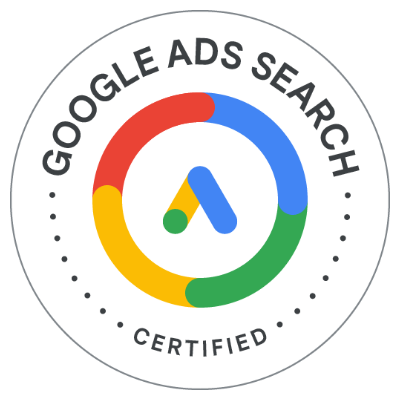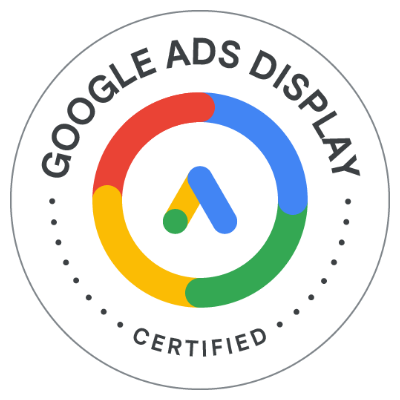Google ads audit
A Google ads audit is a way to evaluate all active campaigns comprehensively to find possible problems and solve them quickly.
Let's discuss your project
An advertisement audit may be required in several situations when:
- you have not analyzed your advertising comprehensively for a long time (a month or more)
- there is a feeling that advertising indicators have started to sag, but you can’t find the reason right away
- advertising before you, the client conducted the client himself
- advertising was run by another agency or specialist
- the previous launch of context in Google Ads was unsuccessful, and you do not want to repeat mistakes
- the launch was successful, and you want to clearly understand the reasons for success in order to scale your solutions
In this article you will find the Google Adwords contextual advertisement audit checklist.
Google ads audit
Checking the correctness of Google Analytics and Google AdWords mapping
Without the Google Ads and GA bundle, the statistics in the advertising cabinet look something like this: we had a lot of clicks, on which we spent a lot of money. It gives little information about the end goal of any advertising (sales) and who bought from you.
So the first basic step of a Google Ads audit is to make sure that the settings of this bundle are correct.
If the settings are correct, you will be able to check:
- What ads were used to come to the site
- what queries drove traffic
- which campaigns/advertisements were more/less effective
- which pages repelled the arriving users, and which, on the contrary, stimulated a purchase or continuation of the journey through the site
- users with what parameters made orders, how they behaved on the site and much more
To begin with, check if the accounts are linked. To do this in GA, go to the “Admin” section and click on “Google Ads Linking.” You’ll see the names of all the accounts that the counter is linked to.

If no accounts are displayed, you need to set up communication. The system automatically suggests an advertising account registered to the same email as GA. For each project, it is best to create a separate “clean” Google account without information on other sites that can spoil statistics.
To check if the goals are pulling in Ads, go to “Tools and Settings” → “Conversions”. If they are not pulling, click on the “Import” button and upload the conversions.
Remember that you can’t analyze statistics without enough data. For example, if goals were not set up in GA, if they were not pulled into the advertising account, if the GA code was installed incorrectly, then after all these adjustments it is better to wait a few weeks until the statistics are collected.
Checking the correctness of the account structure
The structure is crucial for the proper configuration of advertising, subsequent data collection, and analysis.
Advertising in a Google Ads account is organized into three levels:
- Account – encompasses the advertising for a single project (a multi-page site, landing page, or application).
- Campaigns – large sets of ads grouped by a common platform (search or networks), budget, targeting settings, and theme. For instance, one campaign might include ads for selling sofas displayed in searches for Moscow and the Moscow region, while another campaign focuses on chairs rotating in St. Petersburg within a context-media network.
- Ad groups – consist of several ad variations on the same topic, among which the system gradually selects the most effective after rotation.
- Ads – individual units of information dedicated to a single product/service with their own structure (headlines, displayed URL, text, etc.).
If advertising is not organized according to this structure, it can lead to incorrect impressions, budget overruns, decreased CTR and conversion rates, and confusion during analysis.
At this stage, it is advisable to check:
- Whether campaigns are separated in searches and in the Display Network. They should be separated because these platforms have different ad formats and display principles.
- Whether campaigns are separated by regions. Bids may differ in different cities and regions due to variations in competition and service costs.
- Whether campaigns are separated by devices. Shorter and more concise ads are effective on smartphones, as they are easily readable even on small screens.
Next, it is recommended to investigate the level of ad groups in more detail.
Check the following points:
- There should be no ads in the group related to different products.
- The group should contain 10-15 keywords. It’s not advisable to have more to maintain the relevance of ads to user queries and the pages they lead to.
- Keywords in the group should be semantically close so that ads accurately reflect user queries. For example, if you are advertising laptops, do not group ads by different brands. Create a group for each brand and assign landing pages for specific brands. Keywords from the query should be included in each headline and text.
- Identify keywords in your campaigns with the status “Low search volume.” This means that demand for them is very low, so it’s better to disable such ads.
- Ad texts within the group should differ slightly. For example, one can focus on a discount, another on an extended warranty, and a third on bonus points when making a purchase.
Checking Campaign Settings
Ad Schedule
Enable ad display only when your target audience is active. For example, if your target audience is young men with average to high income, you can display ads from 7-9 AM when they commute to work until 8-9 PM when they return home. Align the ad schedule with the office hours or the sales department’s working hours of the advertiser. If reaching the company is not possible after 8-9 PM, and this is the primary method of ordering, it’s better to set the upper time limit for ad display at 6:30-7:00 PM.
If you lack audience data, you can obtain it from Google Analytics by setting a segment for SEO and conversion sessions. This channel represents the most natural traffic source, so the data will be as close to reality as possible.
Geotargeting
Do not place ads across the entire country unless you have an online store with nationwide delivery. Start by understanding where people who place orders on your website are actually located. In Google Analytics, you can find this information in the “Location” report
Platforms
Usually, traffic from search is of higher quality than from Display Network. This is because people on search are looking for something specific and click on ads that mention the product or service they need. In the Display Network, there is no direct connection like this. Ads are shown based on past queries, interests, and previously visited sites. Pay attention to campaigns in networks that have not generated conversions for more than 2-3 weeks and have high bounce rates and low page depth.
However, even these should not be immediately turned off. It’s better to check the “Multi-Channel Funnels” report to see if these campaigns indirectly contributed to conversions – for example, as one of the stages in customer acquisition. Often, a click from the Display Network is just the first interaction with the site. The user then repeatedly visits it from search and display, and only makes a purchase a week or a month later.
Devices
In Google Analytics, analyze statistics for different types of devices. For example, if there are higher bounce rates and lower conversion rates from smartphones, first check the correct display of mobile pages. Until the optimization of the mobile version is complete, you can reduce the number of ad impressions.
Budget
Check if budget constraints are set at the account or campaign level. Such limits prevent overspending. In the future, if you see that money is being spent too quickly in one place and not in another, you can easily change the restrictions.
Strategy
Check which strategy is applied in advertising and whether it aligns with the campaign’s goals. For example, if the main goal is to increase traffic, a conversion growth strategy would be inappropriate. Auto-strategies are available not only in the Google Ads advertising account but also in third-party services like Marilyn. The main difference with auto-strategies here is that you can carefully plan rules for their adjustment based on various parameters.
Keywords
Conduct a semantic Google ads audit based on the following points.
- Look for and remove obviously irrelevant phrases.
- Evaluate whether the match type suits the campaign goals. The default is a broad match type, including similar words and phrases, typos, etc. However, it may lead to non-targeted traffic. For more precise tuning, you can use phrase or exact match.
- Analyze real queries to see what the target audience is genuinely interested in. Based on the results, you can enrich the semantic core with new queries.
- Check negative keywords, ensuring their list is comprehensive and does not contain useful words that might bring in targeted traffic.
- Evaluate the quality of keywords. If it’s below 5, optimize the keywords.
- In GA, check which queries generated the most and least conversions, and which ones resulted in the highest bounce rates. This can be done in the “Google Ads” report → “Keywords.”
Ads
Enter several ads in each campaign and conduct a Google ads audit based on the following criteria.
- Are keywords in the headlines and descriptions?
- Are specific product benefits listed for consumers?
- How well are the texts written?
- Do landing pages match the queries?
- Are extensions used (links to pages with promotions, discounts, tariffs, contacts, etc.)?
- Are extended ads with 3 headlines used, and are the available characters used to the maximum (this increases the visibility and informativeness of the ad)?
Pitfalls in Conversion Tracking
Incorrectly configured goals or their absence. This is the most common issue for clients who have previously managed advertising on their own. Goal setup is a complex operation, and non-specialists often fail to execute it correctly. For example, a client’s goal for a cart order might be configured in one of these ways:
- Based on a sequence of actions (cart visit, checkout page visit, thank-you page view).
- Based on viewing a URL like site.com/cart/thankyou – the thank-you page that appears after submitting an order.
- Based on an event – data submission.
The first option is likely to not work at all because the user must perform all mentioned actions sequentially for the goal to be counted. The second option may work but could provide unreliable data, as users may revisit the thank-you page simply by accessing the URL. The optimal choice is the third option.
Absence of goal or transaction imports into Google Ads. In this case, Google Analytics will have data on visits, conversions, and audience, but it won’t include data on CTR, impressions, clicks, costs, and other crucial ad parameters from Ads. Combining them will have to be done manually.
Tracking effectiveness not based on the right goals. Unfortunately, after an unscrupulous or inattentive context specialist manages advertising, it might be discovered that they reported on metrics such as the number of cart orders and callback form submissions, while the client is interested in e-commerce data. Therefore, it’s essential to discuss the criteria for measuring effectiveness from the start.
Divergence in views on “good” and “bad” conversion with the client. Sometimes, even with correct campaign settings and a consistently growing conversion rate, a client might still perceive the advertising as “ineffective.” They may rely on irrelevant data from the past, advice from friends, former marketers, or colleagues, etc. In such cases, it is crucial to explain in detail to the client what is happening with their advertising, how many orders and revenue it generates, how many new users it attracts, and what contributes to its success.
What a Google ADS Audit Provides
The primary benefit of a Google Ads audit is the ability to view the entire advertising landscape comprehensively and objectively. This allows for the identification of relationships that may have gone unnoticed previously. For instance, the focus may have previously been on CTR, while website conversions were not considered at all, or there may have been campaigns with ads leading to pages that no longer exist.
Depending on the goals of the audit, this can:
- Quickly address key issues (adjust semantic core, update landing pages, add new negative keywords, etc.).
- Improve project KPIs.
- Reduce budget expenditures.
- Enhance website usability.
- Gain better insights into the target audience.
- Even expand the product line.
An Assistant in Effective Advertising Management
The FADS company is always ready to assist in the effective management of your advertising. Reach out to us for an advertisement audit, and we will provide recommendations for improvement or take over the management of your advertising.
Our blog

SEO Promotion of a New Website: Examples, Tricks, Features
In this article, we’ll delve into key aspects of SEO promotion for a new website in 2024, discussing the importance of planning site structure, effective

Google Ads Audit Checklist
When inheriting a PPC AdWords account, it often happens that the account has a unique structure that is only understood by its creator. If you

Online Advertising Advantages and Disadvantages
Internet advertising have become widespread, replacing traditional forms and entering new niches. They appear during short videos, messaging, and on social media pages. While online
Let's discuss your project
Contact us now
E-Mail: info@fads.fi
Address: Runoratsunkatu 5, 02600 Espoo







